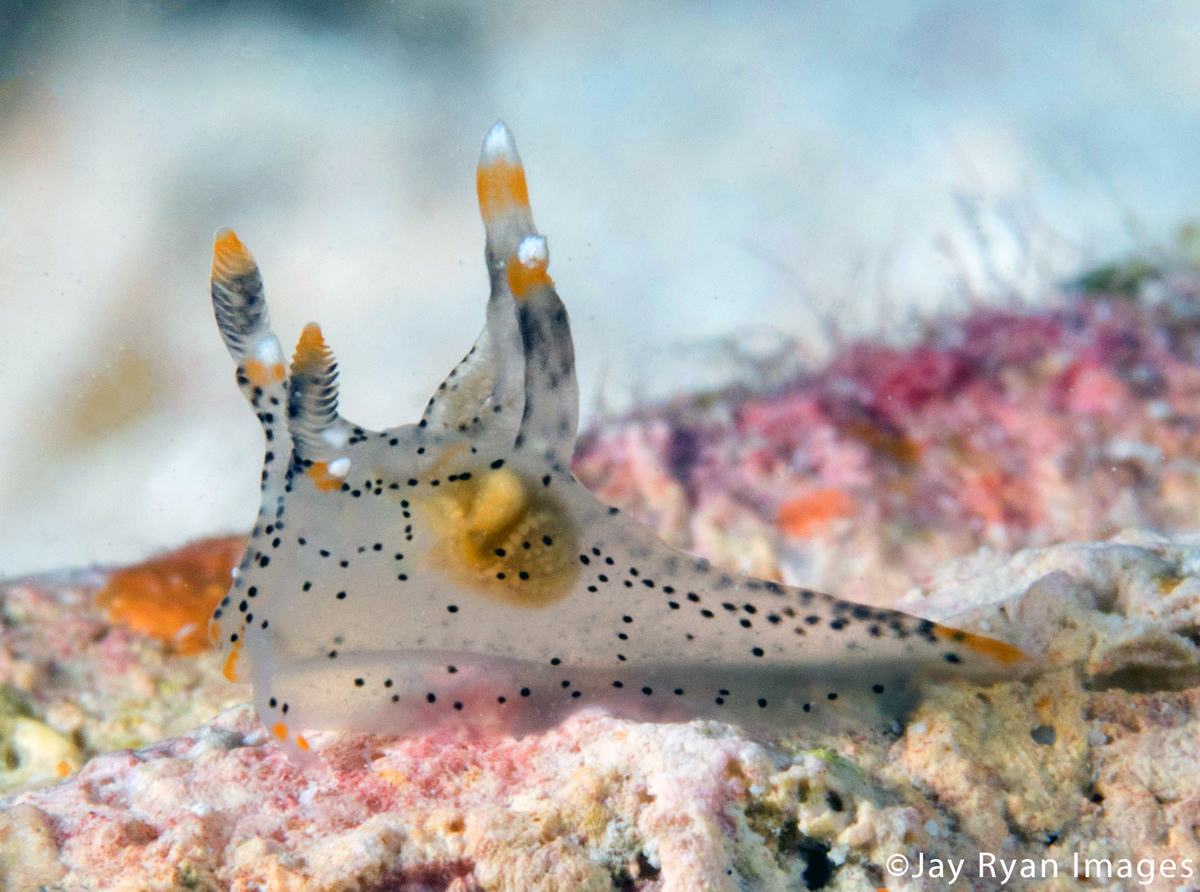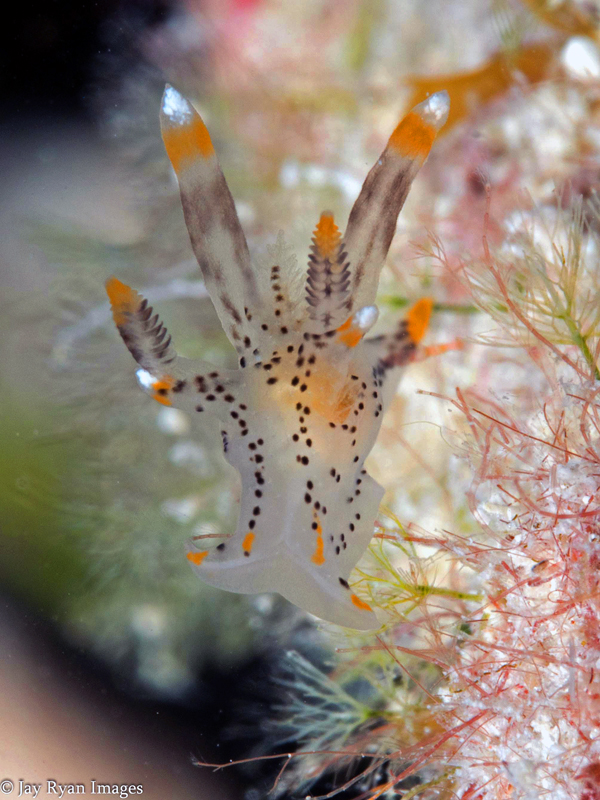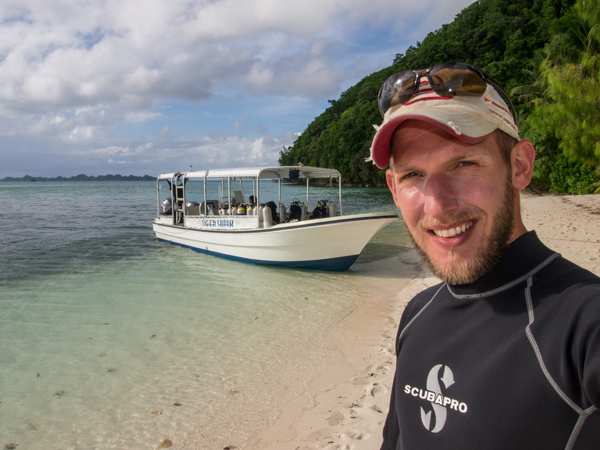 |
Thecacera cf. picta
Image courtesy of Jay LordLagoon of Kwajalein Atoll, Marshall Islands
 |
Thecacera cf. picta , Baba, 1972
Having seen several different species of Thecacera on dive trips to the Philippines and Indonesia, I was always on the lookout for one back home at Kwajalein, Marshall Islands. Although I was unsuccessful, that gap has now been filled by a nudibranch found recently by Jay Lord, who came up with the first specimen of any Thecacera species in the Marshalls. But along with my delight at seeing Jay's photo came the question, "What are we going to call it?" Clearly, the color pattern is reminiscent of Thecacera picta , a species known from the western Pacific and Indian Oceans and including Japan, Australia, Indonesia, the Philippines, Vanuatu, the Solomons and the Maldives. I am aware of no records from anywhere in Micronesia, so if it is indeed Thecacera picta , the Marshalls, at the far eastern end of Micronesia, presents a pretty large jump in the distribution. In addition, the coloration is odd. Compare Jay's photos with a more typical specimen of Thecacera picta taken by Jeanette Johnson near Anilao, Philippines. The base color of the bodies of both is translucent white. The processes lateral to the gills and to the rhinophores are similar, with white tips, an orange-red subapical band, followed by a dark band, black in the Philippine specimen and more blotchy dark gray in the one from Kwajalein. Also, the anterior processes are much smaller in the Kwajalein specimen. Rhinophores are also similar, with orange-red tips and the rest of the club black in the Philippines, and bearing lamellae edged in black at Kwajalein. In both there is a hint of orange at the anterior end and on the tip of the tail. The most visible difference is in the black markings on the body: thick black bands in the Philippine specimen and rows of small black spots that are also scattered over the sides of the foot of the one from Kwajalein. There are known specimens of Thecacera picta from the Maldives and northwestern Australia that have black spots in addition to black lines , but the spots are fewer and much larger. I would probably go with an extreme variation of Thecacera picta , but if we could get a specimen for DNA analysis, it could turn out to be something new. Certainly, so far away from the normal population, those in the Marshalls might be diverging. The conditions under which this animal was discovered are just about as exciting as the discovery itself. Jay and dive buddy Jeremy were doing some late afternoon shore diving near the swimming beach on Kwajalein Island. On their first dive, they were privy to an unusual sight for divers at Kwajalein: an 8-foot tiger shark that swam close by to investigate them three times during the course of the dive, although with their macro lenses they were not able to get photos. As Jay said, by the third pass, the "mood had changed from excitement to a bit nervous. At the first pass, I figured the tiger wondered what we were, but by the third pass it was wondering what we tasted like." As air was low, they returned to shore to switch tanks and as dusk approached, went back into the water. Darkness fell and there was no more sign of the shark, but upon return to the shallows, Jeremy found a nice Trapania and stopped to photograph it. While waiting, Jay spotted coming out of some Halimeda algae another small, 10mm long nudi that turned out to be the precious Thecacera. I have to hand it to those guys. It shows dedication to continue to look for slugs with the possibility of an 8-foot tiger looking over their shoulders. Jay explained by saying "I didn't want to look up and see that tiger make a night time pass on me so I kept my head in the sand looking for macro!"
Santa Barbara, Calif Mar., 2018 Send Scott email at uwkwaj@yahoo.com
|
Jay Lord on location

I began diving in 2010 on the little island of Gili Trawangan, Indonesia. Soon after I was lucky enough to get a job on the island of Kwajalein in the Republic of the Marshall Islands. Here I spend every weekend diving the wrecks, reefs, coral heads and sand flats in the warm blue water in search of nudibranchs and other odd critters. My favorite place to search for nudibranchs are the algae and sponge covered buoy lines that mark the location of a dozen or so wrecks scattered across our lagoon. After multiple camera upgrades over the years, I am now shooting with an Olympus OMD EM-5 Mk2 in the Nauticam housing with two Inon Z240 strobes. The 60mm is my go to lens, sometimes using a Subsee +10 diopter for extra magnification.
Send Jay email at jaylord7@gmail.com |
